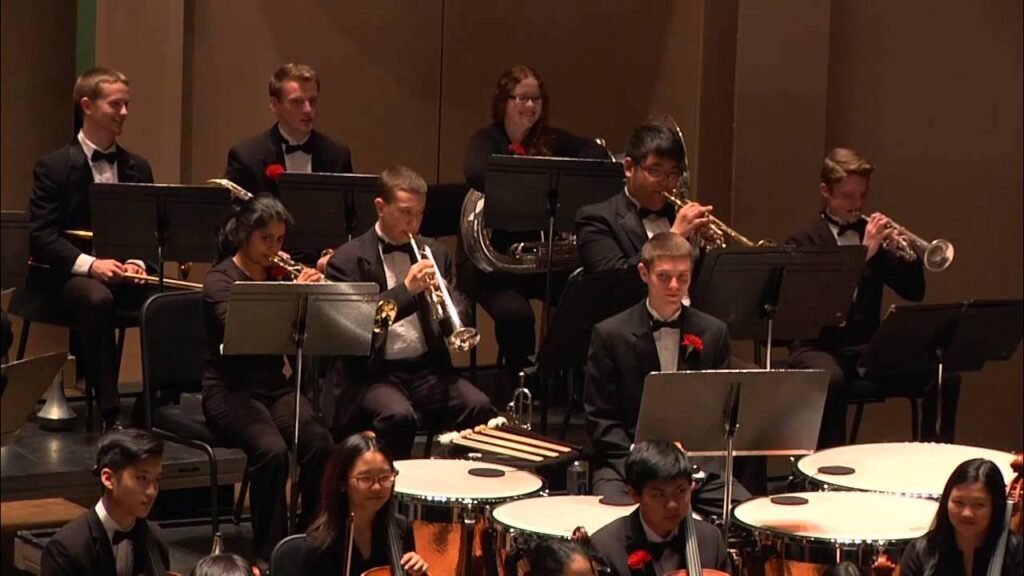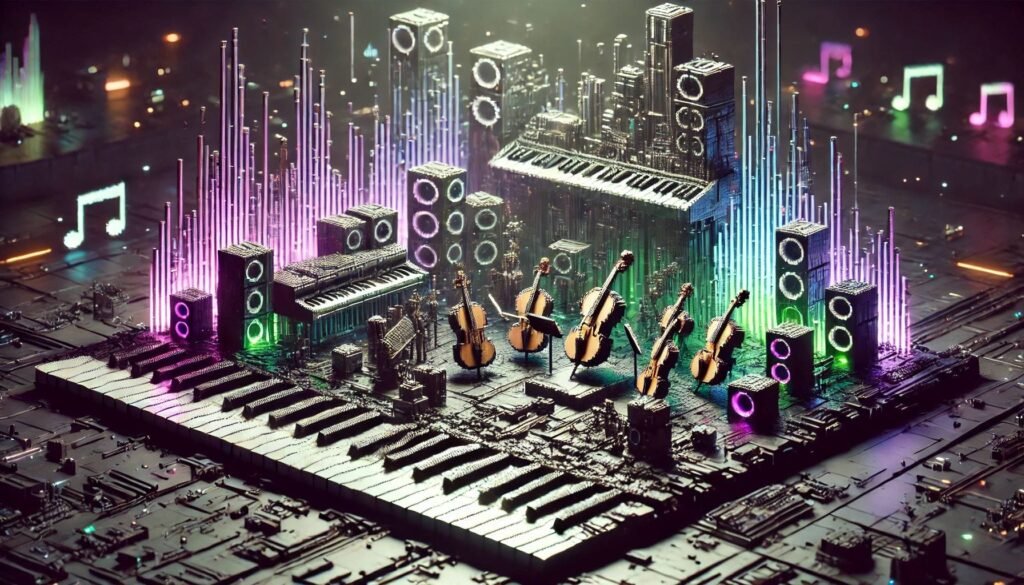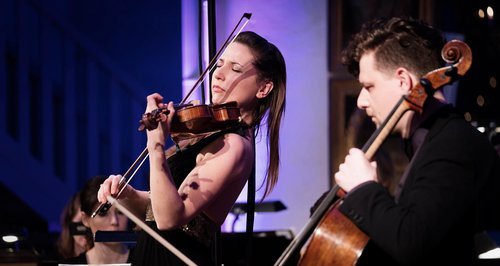Introduction
Orchestral music has long been celebrated for its grandeur, complexity, and emotional depth. While many associate it primarily with historical periods and classical composers, orchestral music remains a major source of inspiration for today’s modern artists across diverse genres. Whether in pop, film scores, electronic music, or even hip-hop, elements of orchestral composition continue to fuel creativity and innovation. In this article, we’ll explore how orchestral music continues to inspire modern artists, why its influence remains powerful, and how it evolves with contemporary culture.
Understanding Orchestral Music
What Is Orchestral Music?

Orchestral music refers to compositions performed by an orchestra — a large ensemble of musicians grouped into sections including strings, woodwinds, brass, and percussion.
Historical Roots
Orchestral music gained prominence during the Baroque, Classical, and Romantic periods, with composers like Bach, Mozart, Beethoven, and Tchaikovsky setting the gold standard for musical craftsmanship.
Why Orchestral Music Stands Out
- Complex layering of sounds
- Wide emotional range
- Powerful storytelling through instrumentation
- Rich harmonies and dynamic contrasts
The Timeless Appeal of Orchestral Music
Emotional Resonance
Orchestral music’s ability to evoke deep emotions — from joy to sorrow to triumph — continues to captivate audiences and artists alike.
Grandeur and Scale
The sheer size and richness of an orchestra create an epic soundscape that few other musical arrangements can match.
Technical Mastery
Modern musicians and producers respect orchestral compositions for their technical brilliance and often aspire to incorporate similar depth into their work.
How Orchestral Music Influences Modern Artists

Film and Television Scores
Modern film composers like Hans Zimmer, John Williams, and Howard Shore have reimagined orchestral traditions, blending them with electronic elements to create unforgettable soundtracks for blockbusters like Inception, Star Wars, and The Lord of the Rings.
Key Examples:
- Star Wars Main Theme by John Williams uses heroic orchestral arrangements that have become iconic.
- The Dark Knight soundtrack by Hans Zimmer merges orchestral sounds with digital textures for a futuristic feel.
Pop and Rock Music
Many pop and rock artists incorporate orchestral instruments or arrangements into their songs to add richness and drama.
Key Examples:
- The Beatles’ use of a full orchestra in A Day in the Life
- Coldplay’s Viva La Vida prominently features strings and orchestral elements
- Florence + The Machine’s sweeping arrangements are often inspired by classical orchestration
Electronic and Hip-Hop Music
Producers in EDM and hip-hop frequently sample orchestral sounds to add grandeur and emotional weight to their beats.
Key Examples:
- Kanye West’s All of the Lights features lush orchestral backing.
- Daft Punk’s Tron: Legacy soundtrack beautifully blends electronic beats with a full orchestra.
Video Game Soundtracks
Modern video games often use full orchestral scores to create immersive experiences.
Key Examples:
- The Legend of Zelda series employs orchestral music to enhance storytelling.
- Final Fantasy soundtracks by Nobuo Uematsu often blend traditional orchestration with contemporary sounds.
Why Orchestral Music Resonates with Modern Artists
Universal Emotional Language
Regardless of genre, orchestral music speaks a universal emotional language that transcends time, culture, and trends.
Dynamic Versatility
Orchestral music can be adapted to suit virtually any emotional or dramatic context — from intimate love scenes to grand battle sequences.
Creative Challenges
Blending classical orchestration with modern production techniques presents creative challenges that many contemporary artists enjoy tackling.
Techniques Modern Artists Borrow from Orchestral Music

Layering and Texture
Orchestral music teaches the importance of layering different instruments to create rich, textured soundscapes.
Dynamics and Contrast
The dramatic use of crescendos, decrescendos, and changes in tempo and volume influences how modern songs build emotion and tension.
Storytelling Through Music
Many orchestral pieces are structured like narratives — a technique that modern artists use to tell stories through their albums or tracks.
Instrumentation Diversity
Artists increasingly incorporate a wide range of instruments (strings, horns, percussion) rather than relying solely on guitar or synths.
Orchestral Collaborations with Modern Artists
Cross-Genre Collaborations
Artists are increasingly collaborating with orchestras for special performances or albums.
Key Examples:
- Metallica’s S&M album with the San Francisco Symphony
- Lady Gaga’s orchestral performances during award shows
- Radiohead’s use of string orchestras for live versions of How to Disappear Completely
Special Live Performances
Many music festivals now feature orchestral interpretations of electronic, pop, and rock songs, drawing in younger audiences and creating unique concert experiences.
Keeping Orchestral Music Alive in the Digital Era
Virtual Orchestras
Technology allows artists to access digital orchestral libraries, making it possible to create symphonic arrangements without hiring a full orchestra.
Educational Outreach
Music education programs often introduce orchestral elements early, helping cultivate appreciation among young musicians.
Film and Gaming Industry Growth
The demand for cinematic music in film, TV, and games ensures orchestral music continues to be a vibrant part of modern entertainment.
Challenges of Merging Orchestral and Modern Music
Balancing Authenticity and Innovation
Maintaining the authenticity of orchestral sounds while innovating with new genres can be challenging.
Cost and Accessibility
Hiring a full orchestra can be expensive, making digital orchestration a popular but sometimes imperfect substitute.
Audience Expectations
Modern audiences sometimes prefer the immediacy of electronic or pop sounds, requiring artists to carefully balance orchestral elements without overwhelming listeners.
Also Read : How To Master The Art Of Music Event Planning
Conclusion
While centuries old, orchestral music continues to inspire modern artists across every genre imaginable. Its emotional depth, technical brilliance, and universal appeal ensure that it remains a fundamental influence on today’s music culture. Whether through film scores, pop ballads, or hip-hop beats, orchestral traditions live on, evolving with technology and new creative visions. For artists and listeners alike, orchestral music offers a timeless, powerful tool for storytelling, innovation, and emotional connection.
FAQs
How does orchestral music influence modern music?
Orchestral music influences modern music by providing techniques in layering, storytelling, and emotional dynamics that artists across all genres use today.
What are some examples of orchestral elements in pop music?
Pop songs like Viva La Vida by Coldplay and A Day in the Life by The Beatles use orchestral strings, horns, and complex arrangements.
Why do film composers use orchestral music?
Orchestral music’s dynamic range and emotional power make it ideal for enhancing drama, tension, and character development in films.
Can orchestral music be created digitally?
Yes, many artists use digital orchestral libraries to create symphonic sounds without needing a live orchestra.
What modern genres use orchestral music?
Pop, rock, hip-hop, electronic dance music, film scores, and video game soundtracks all incorporate orchestral elements.
How has technology impacted orchestral music?
Technology has expanded access to orchestral sounds through digital libraries and virtual performances, allowing more artists to experiment with orchestral elements.
Are young people interested in orchestral music today?
Yes, orchestral music is gaining popularity among younger audiences through film scores, gaming soundtracks, and innovative artist collaborations.
What is the biggest challenge of using orchestral music in modern tracks?
Balancing the grandeur of orchestral arrangements with modern sounds without overwhelming the listener can be a creative challenge.
Do orchestras collaborate with pop and rock artists?
Yes, collaborations like Metallica’s S&M and Radiohead’s live orchestral performances show that orchestras and modern artists can create powerful works together.
How can someone start appreciating orchestral music?
Start by exploring famous film scores, beginner classical playlists, or attending a live orchestral concert to experience the power and emotion firsthand.

